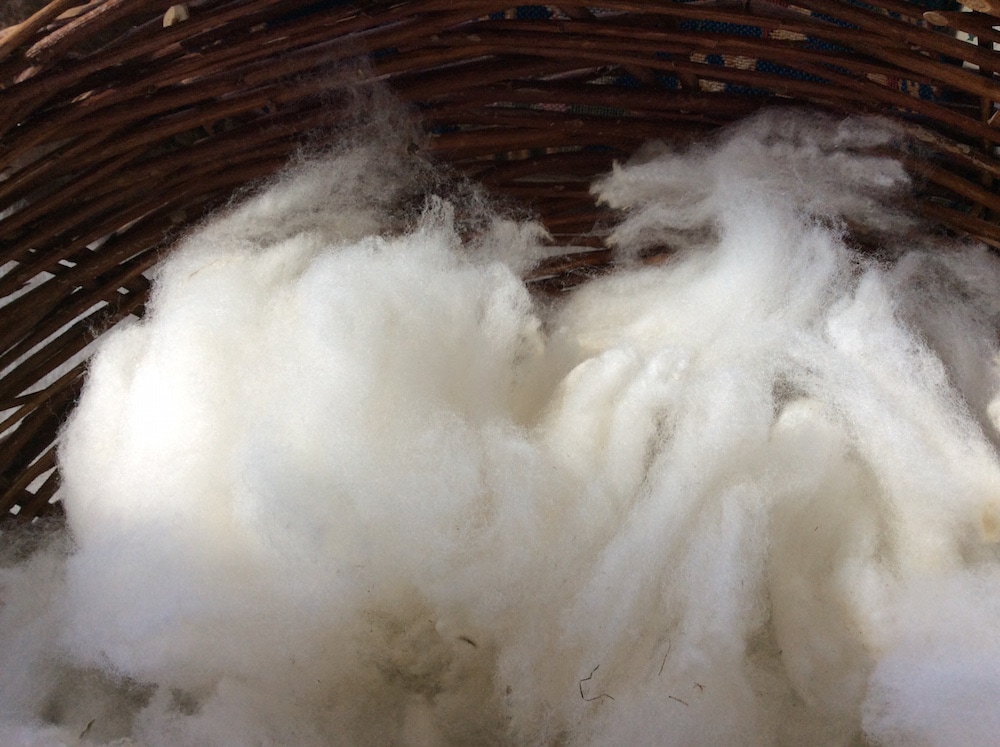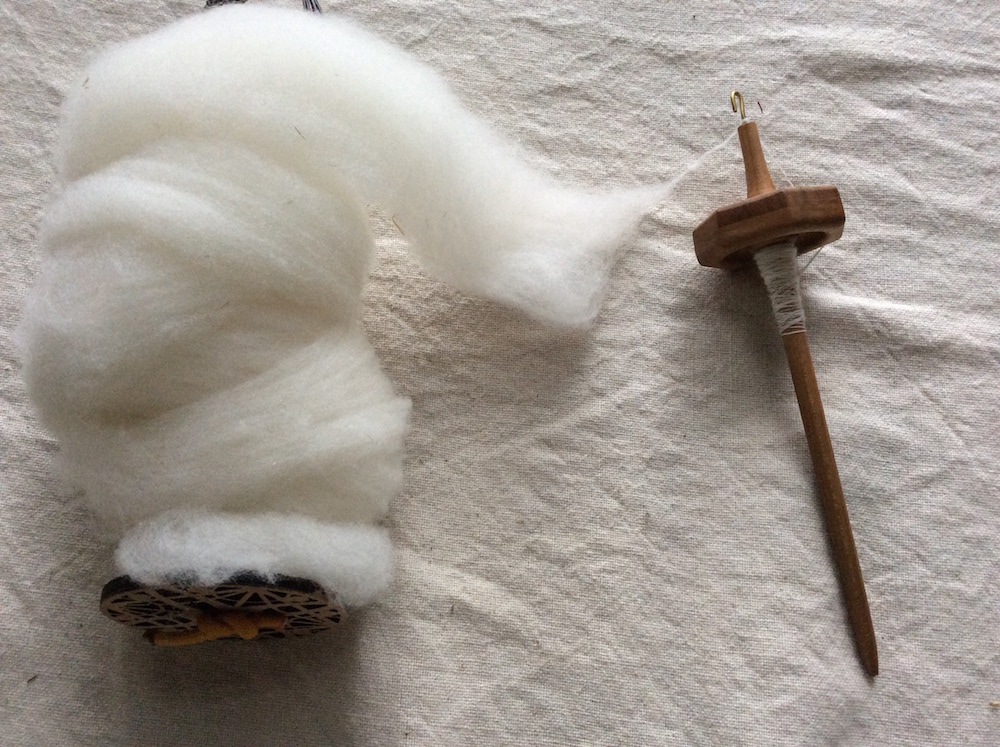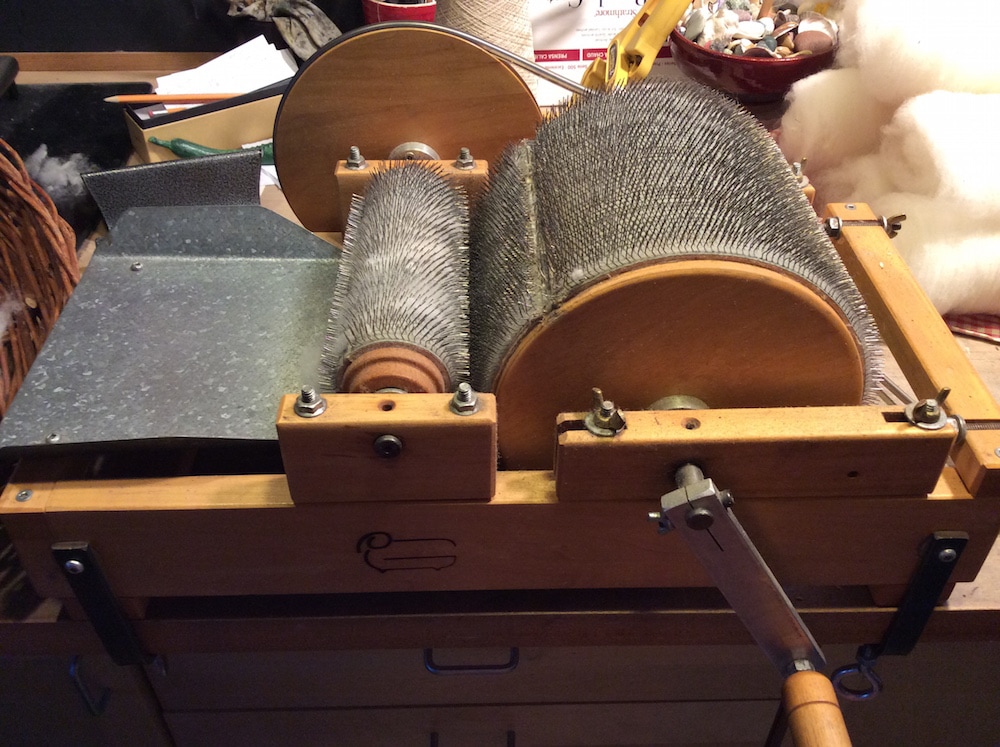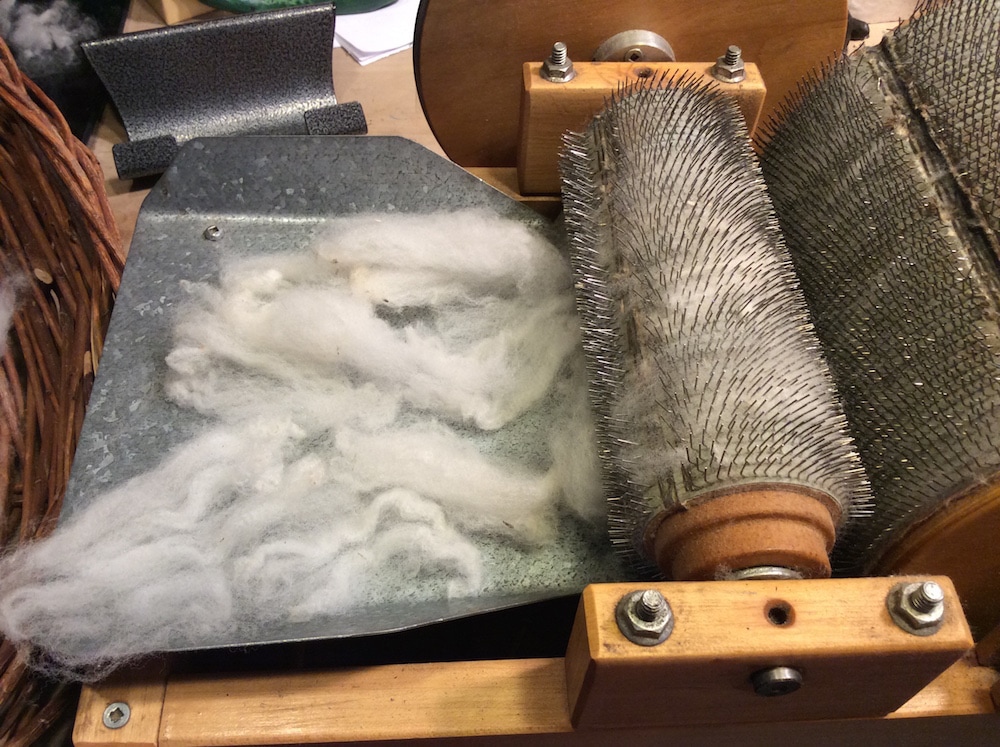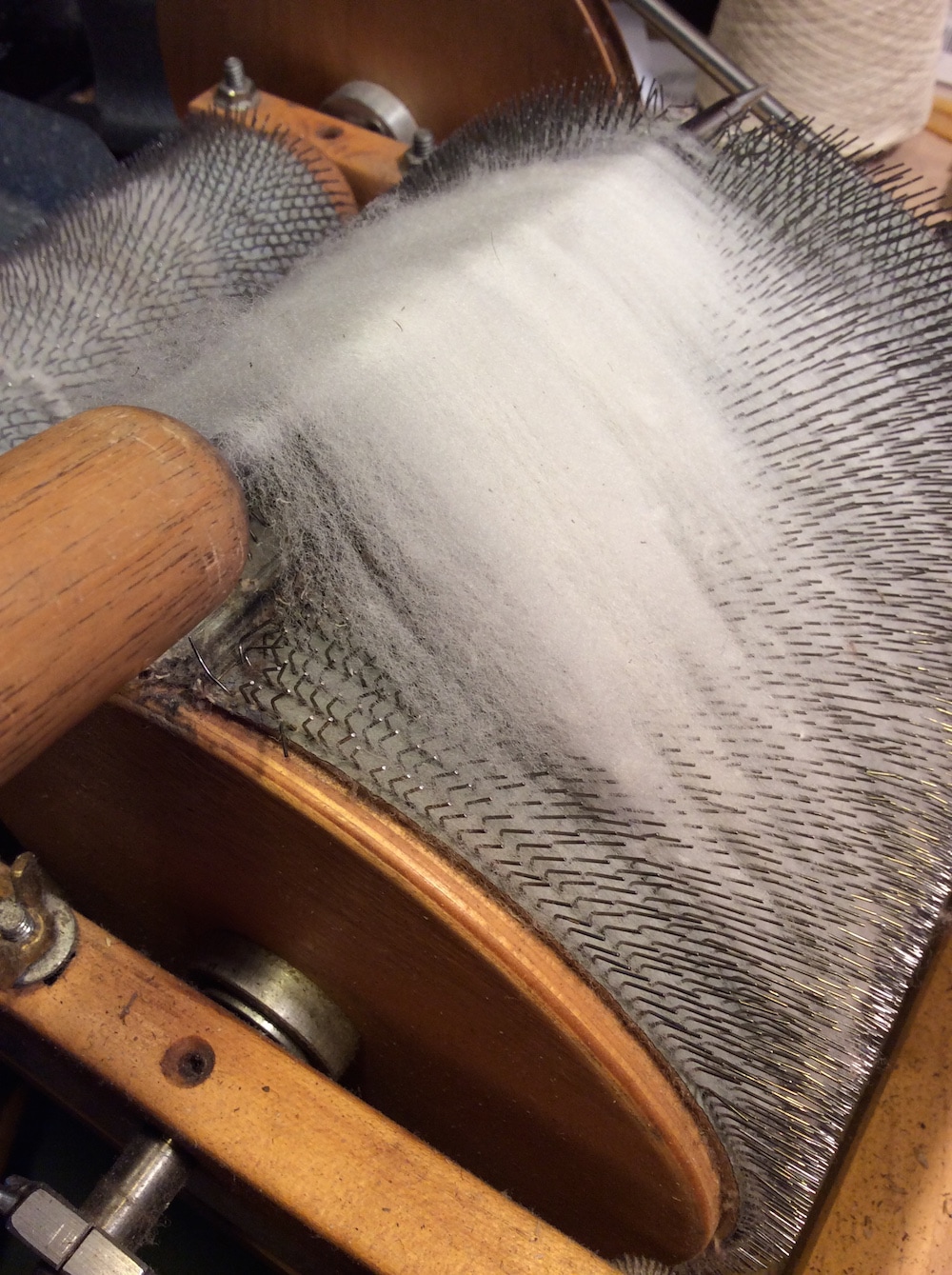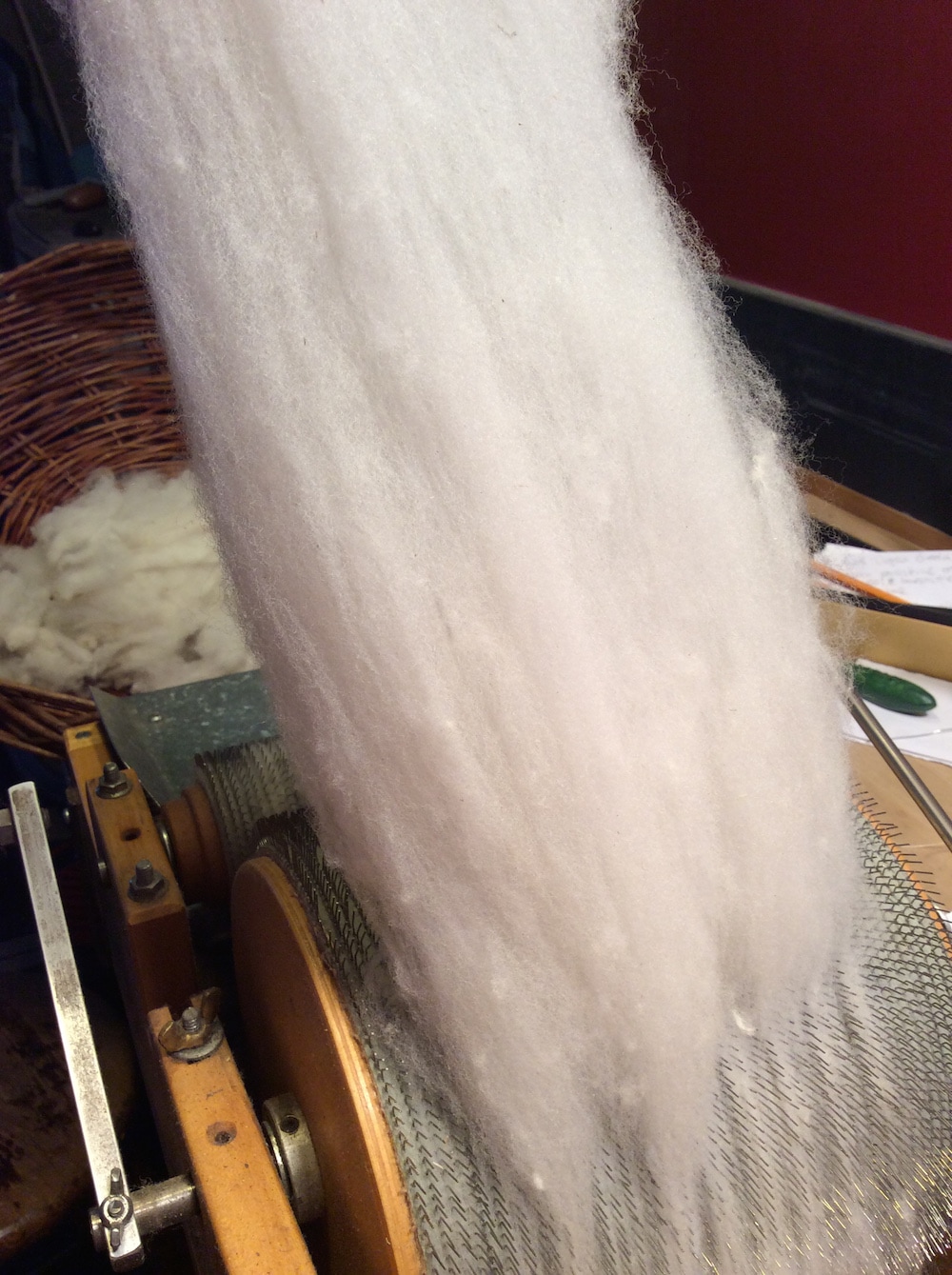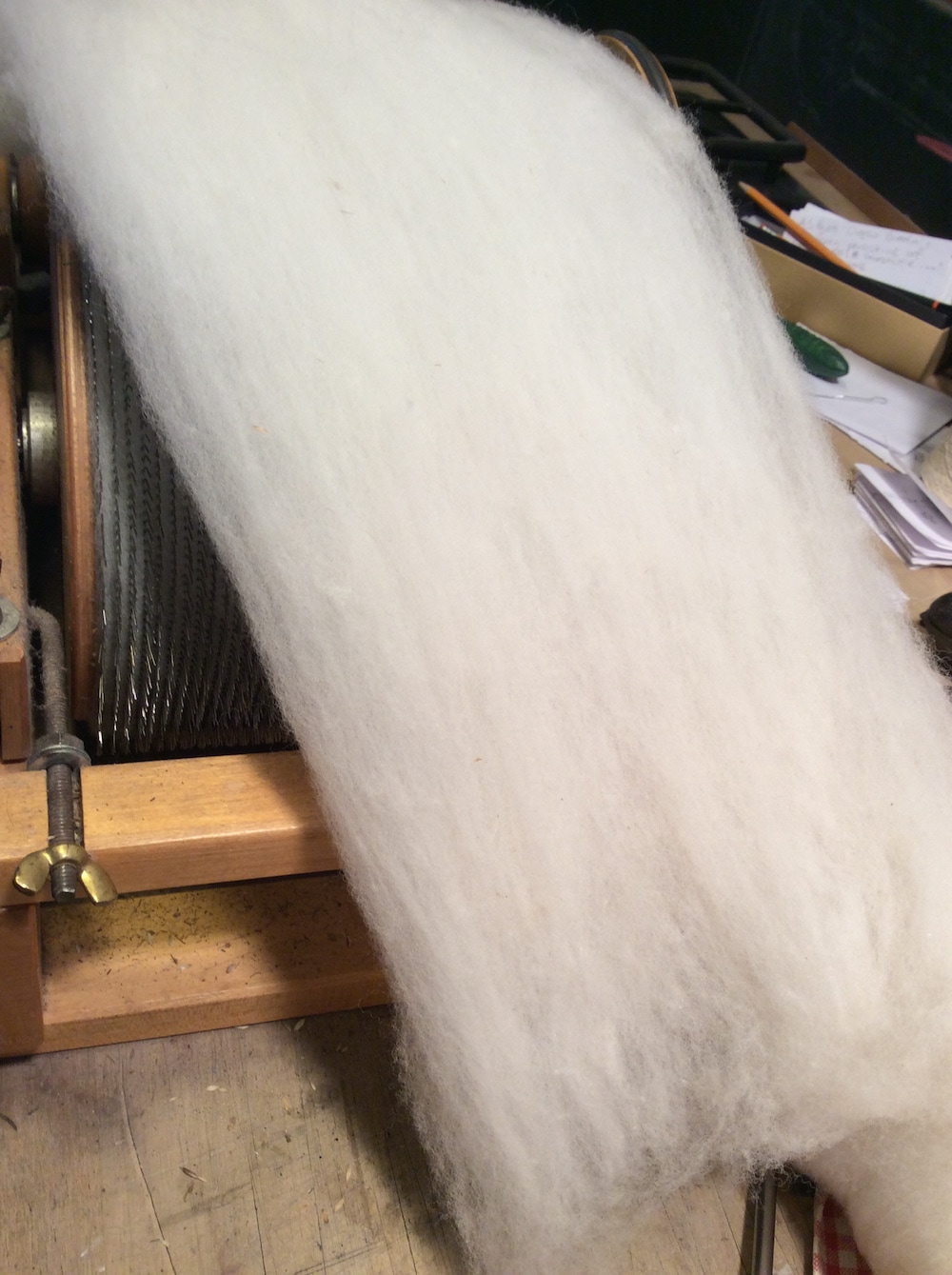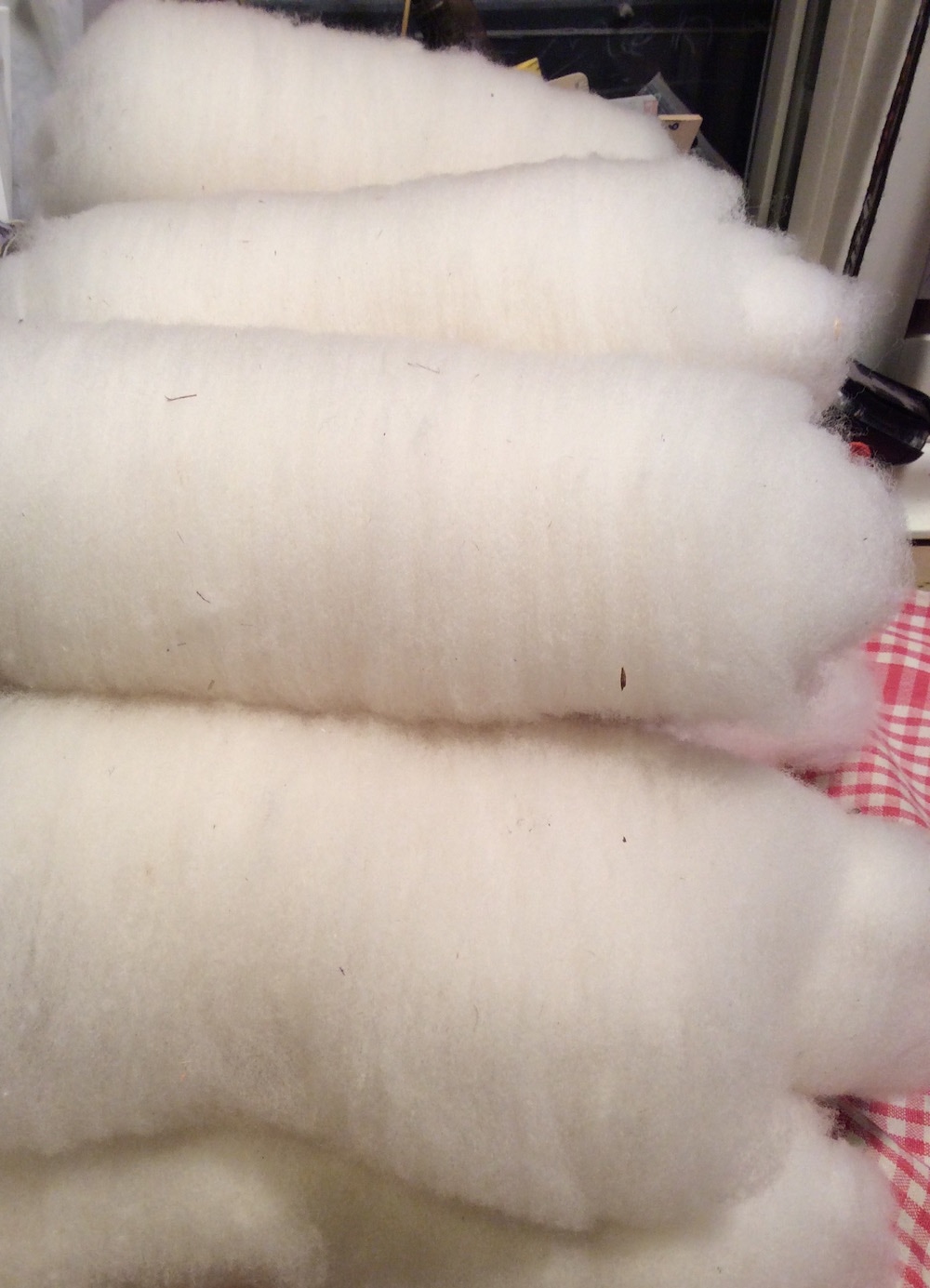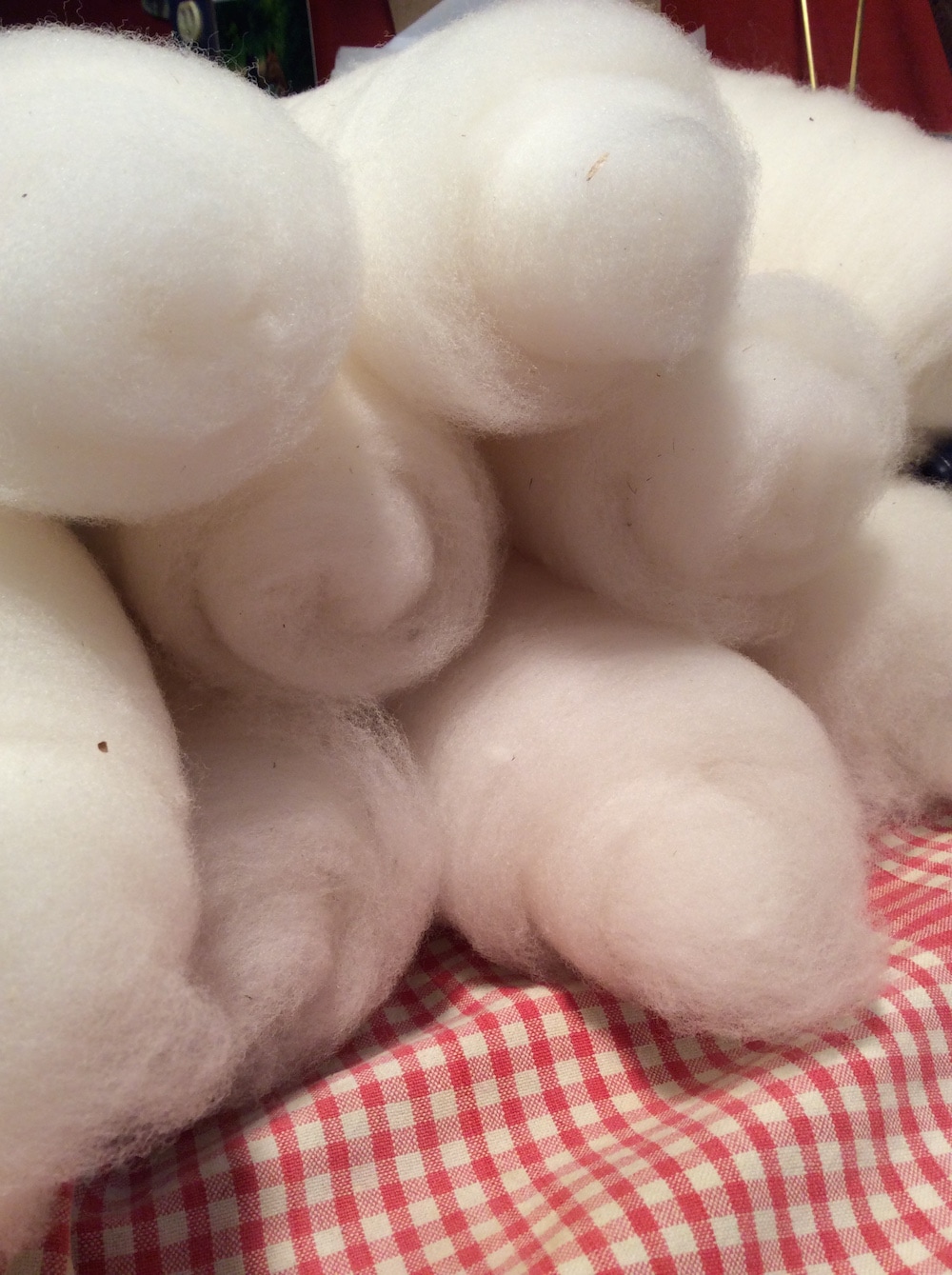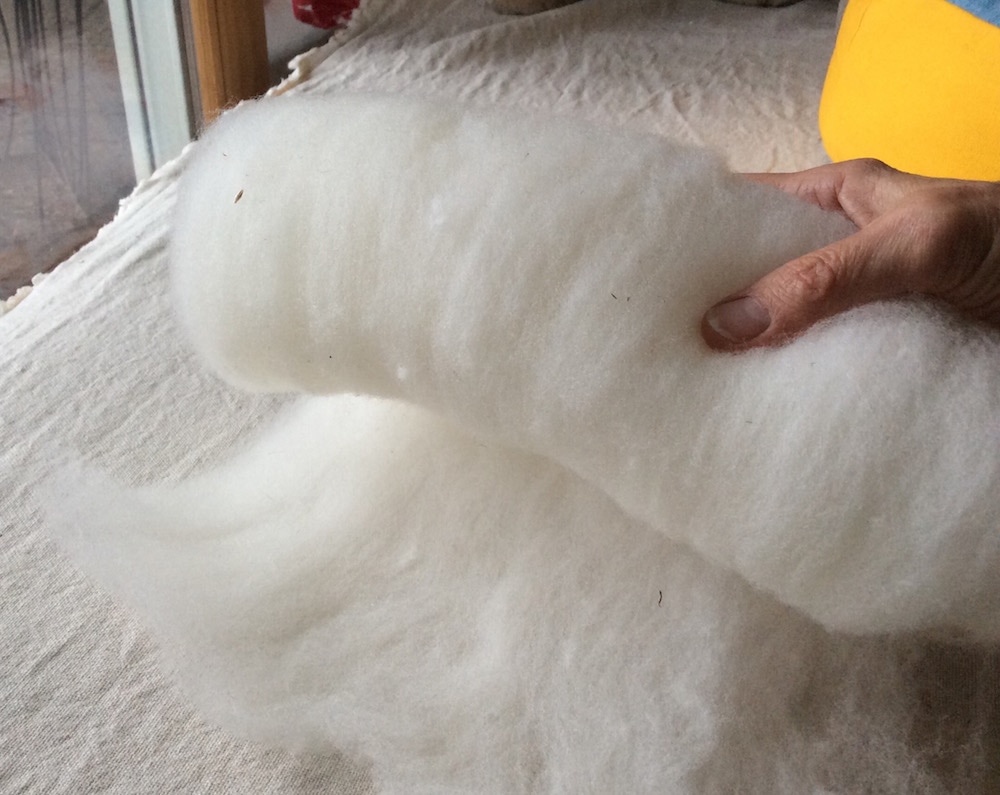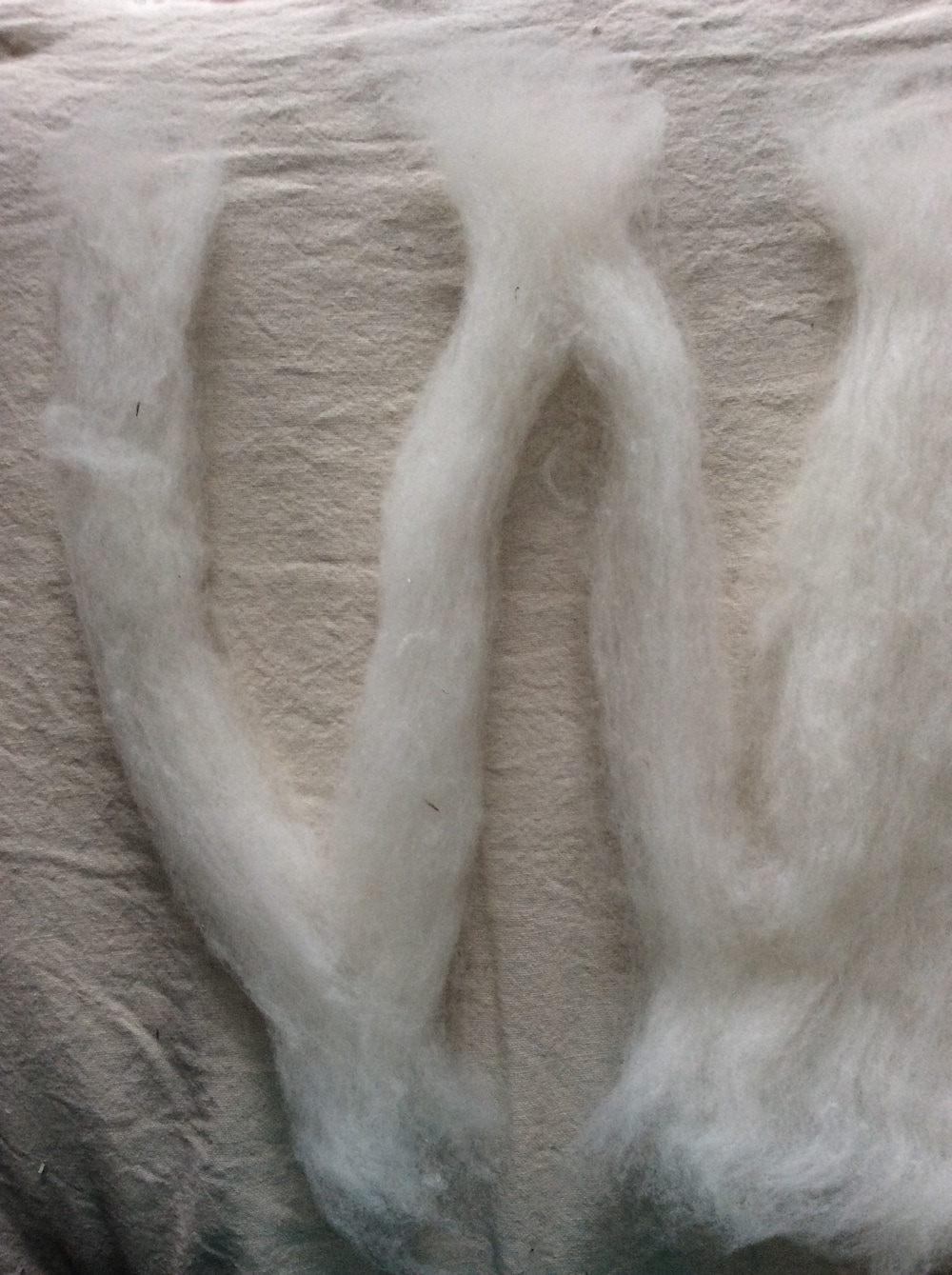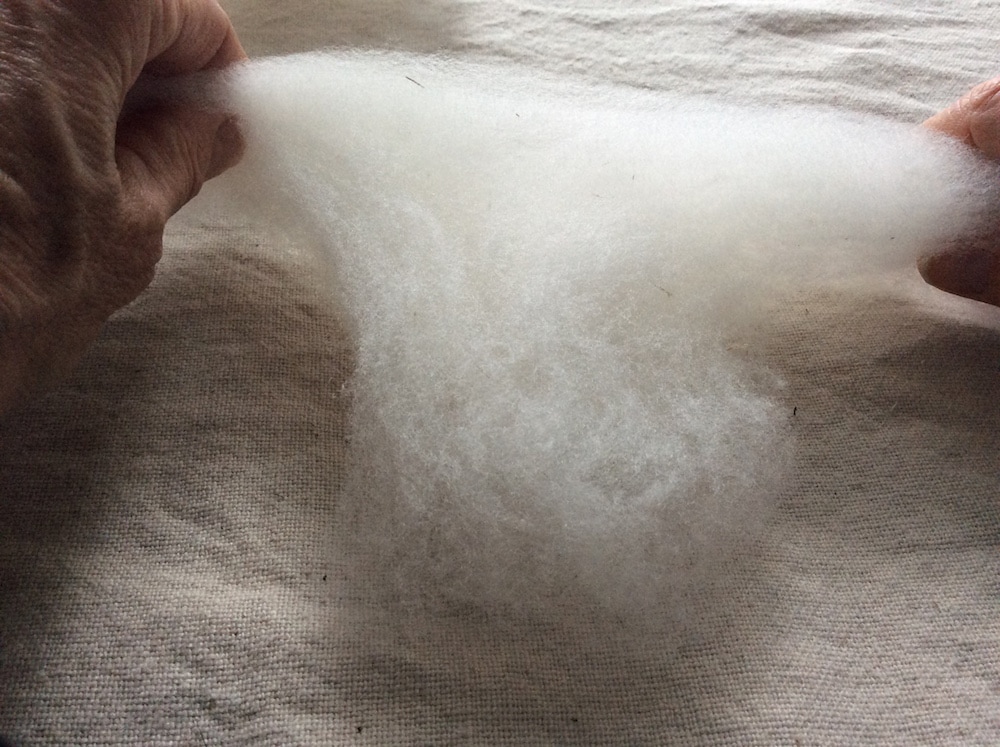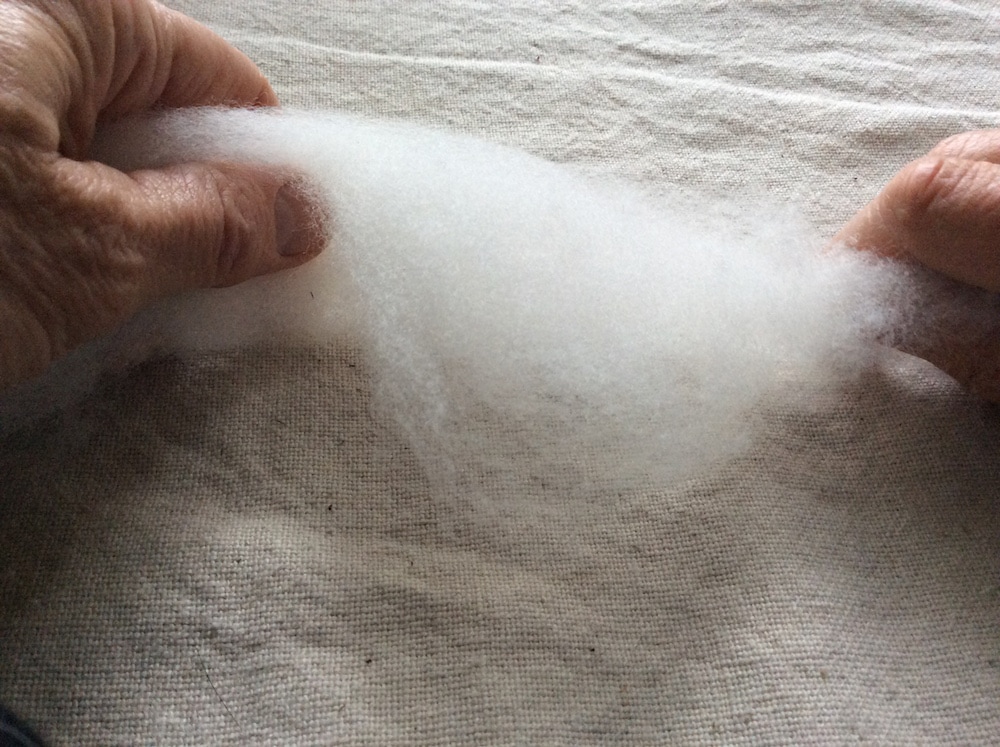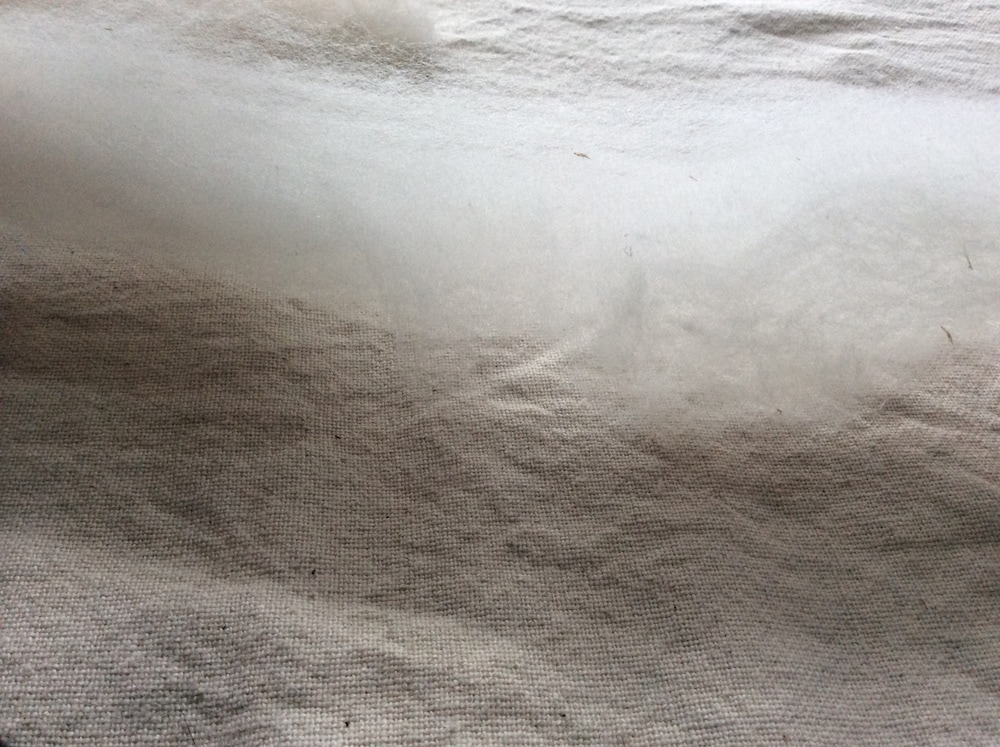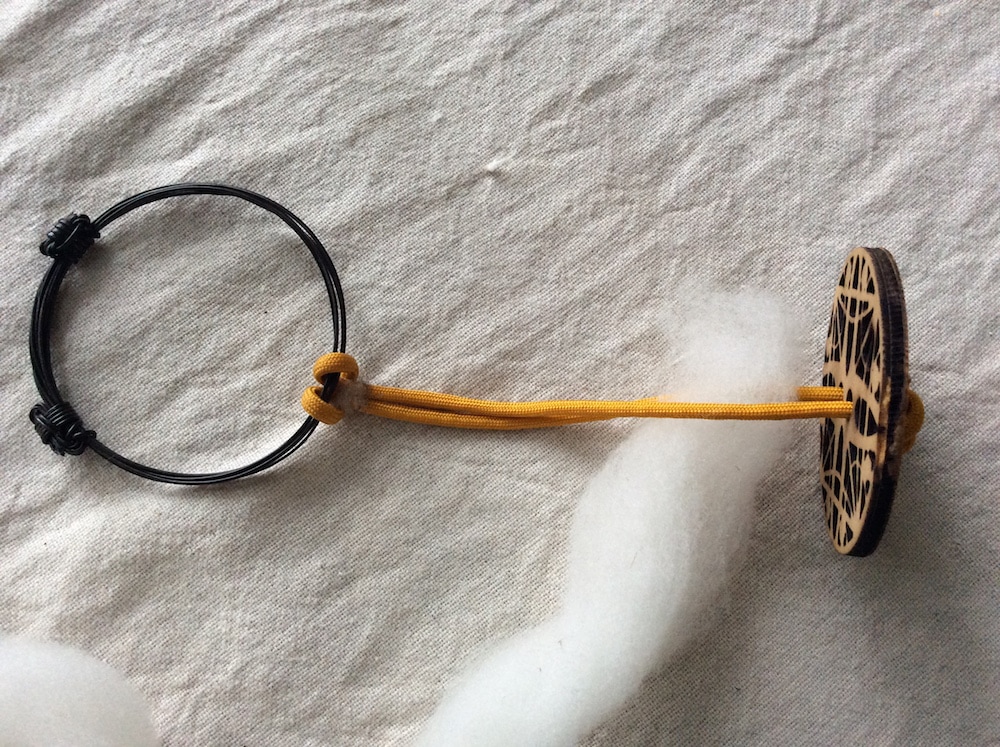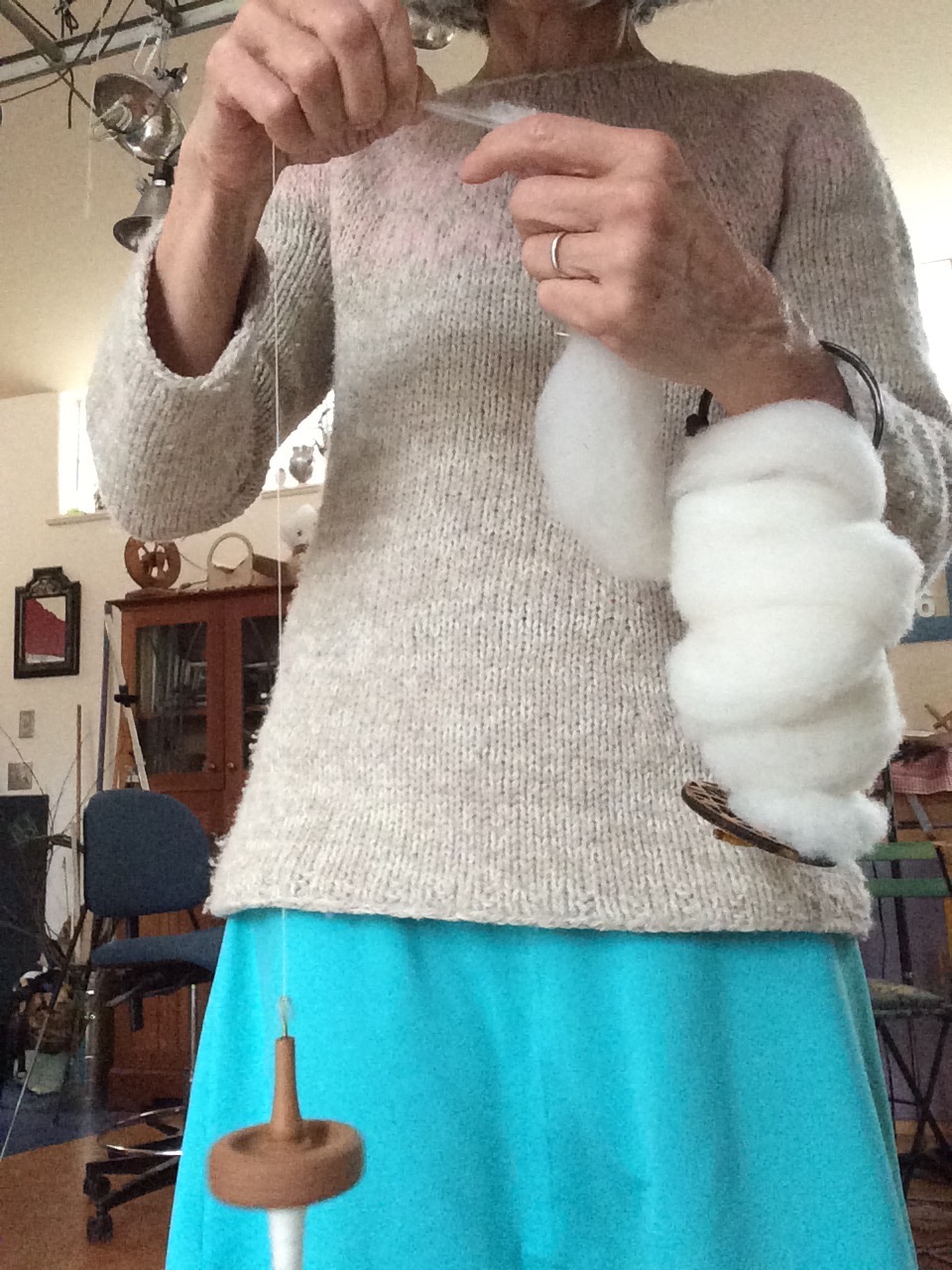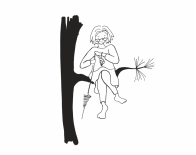Raw fleece (from a known and preferably local source), is my favorite form in which to get it.
And once I've washed said wool (subject for another blog post),
my favorite preparation method is hand teasing then Drum Carding.
Here's a quick pictorial overview of my standard procedure
as that is what I was doing yesterday!
Starting with a pile of clean fleece, I gently grab both sides of each lock or vaguely lock-shaped wad of fleece, pull it apart to open it up, then toss it into a basket.
If there are second cuts or egregious bits of Vegetable Matter (VM) I try to pick them out at this stage.
I used to long for a picker which would make this part really fast, but over time have come to realize that I get a sense of the fiber's nature by handling every lock, even if briefly, and I don't want to miss that.
Best done outside with birds singing and a cup of tea that is slightly upwind.
It has processed more pounds of wool than I care to stop and calculate but I've not yet had to replace the carding cloth, which I would describe as "medium."
I've actually never really used any other drum carder so can't make comparisons, but this has been a faithful workhorse and an essential part of my practice since then and I've
never begrudged it the space it takes up, even in the years I lived in a 200 square foot house.
(note: I just went to the Pat Green website to make the link above and read that the drum carders they make now are vastly superior to the ones they were making 10, 20 or 30 years ago, but I'm still happy with mine!)
The teeth on the licker-in (smaller drum) always get clogged with bits of fiber but somehow, as long as the distance between the two drums is right for the weight of the fiber, most slips neatly into the teeth of the big drum.
I do not try to keep all the locks going one direction as I will end up spinning the batt from both ends. At other times in my spinning life I have worked to keep all the locks going one way, teasing with extreme care and only spinning from one end of the batt, but not just now. If I want that kind of directional preparation I am more likely to use use combs.
When the big drum is full (sooner than I usually think because sometimes I prop a book up in front of me and read while I feed the carder and turn the crank and I have been known to get lost in the pages), I slip the doffer into the open spot in the carding cloth and lift, first one end then the other, separating the strands of wool until-- Pooof-- they slip apart and there are two ends.
Tearing the batt lengthwise into four or five strips (forgot to take a photo), I then feed each through individually, spreading it out in the tray so the fibers hit the teeth slightly differently than they did the first time through.
This can be a great moment for blending-- different parts within an uneven fleece or two different fleeces carded together in the second or even a third run through can produce interesting batts. In general though, I'm not that into blending as I don't like to spin in color.
unroll, shake a little, then tear into zig zags as you can see below.
I start by tugging gently along the length of each 'leg' to even things out and to remind the fiber that it's current position has been only temporary, then when I get to the 'turns' a few gentle tugs on each side allows the fibers to switch direction without much of an interruption to the flow.
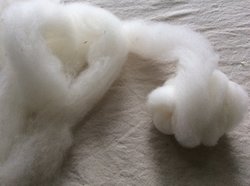
The usefulness of a wrist distaff belies the simplicity of its structure, for with it and fiber stays contained and orderly, is unaffected by wind or an urgent need to divest oneself of spindle and distaff to rescue a child or move a pressure canner or make a piece of cinnamon toast. Without said distaff, a spinner is forever making joins or wrapping and unwrapping great wads of fiber from head or shoulder, or mashing and felting the poor wool in a sweaty armpit, or stopping the spindle because a breath of air has just blown the dangling loose fiber mass into the newly spun length of yarn.
Not that any of those things ever happened to me... But in theory, it could.
Selfie taking is way more angst inducing than preparing fleece, methinks.
